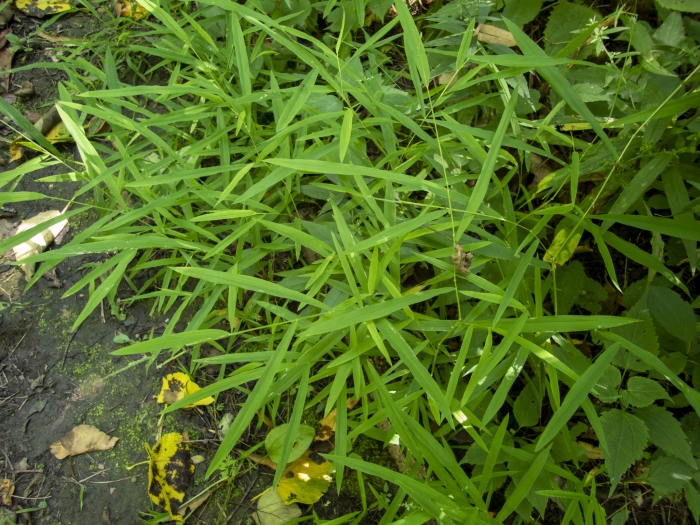White Grass
(Leersia virginica)
White Grass (Leersia virginica)
/
/

Randy A Nonenmacher
CC BY 4.0
Image By:
Randy A Nonenmacher
Recorded By:
Copyright:
CC BY 4.0
Copyright Notice:
Photo by: Randy A Nonenmacher | License Type: CC BY 4.0 | License URL: http://creativecommons.org/licenses/by/4.0/ | Rights Holder: Randy A Nonenmacher | Publisher: iNaturalist | Date Created: 2021-08-14T14:17:18-07:00 |

























Estimated Native Range
Summary
Leersia virginica, commonly known as White Grass or White Cutgrass, is a perennial grass native to the understory of deciduous forests, wet meadows, and along stream banks in eastern and central North America. It typically grows to a height of 2-3 feet (0.6-0.9 meters) and spreads through rhizomes to form dense colonies. White Grass has a delicate appearance with fine-textured, bright green leaves and a slightly arching form. It blooms from mid-summer to early fall, producing airy, branched flowering heads that are not particularly showy but add a subtle texture to the landscape. The flowers are followed by small, overlapping spikelets that are characteristic of the species.
White Grass is valued for its ability to thrive in moist, shady conditions, making it an excellent choice for naturalizing in wetland gardens, rain gardens, and riparian plantings. It is also used for erosion control due to its spreading habit. In cultivation, it prefers partial shade to full shade, consistently moist to wet soils, and can tolerate poorly drained areas. While it is not drought-tolerant, it is relatively low maintenance once established. Gardeners should be aware that it can spread aggressively in ideal conditions, potentially becoming invasive in some areas.CC BY-SA 4.0
White Grass is valued for its ability to thrive in moist, shady conditions, making it an excellent choice for naturalizing in wetland gardens, rain gardens, and riparian plantings. It is also used for erosion control due to its spreading habit. In cultivation, it prefers partial shade to full shade, consistently moist to wet soils, and can tolerate poorly drained areas. While it is not drought-tolerant, it is relatively low maintenance once established. Gardeners should be aware that it can spread aggressively in ideal conditions, potentially becoming invasive in some areas.CC BY-SA 4.0
Plant Description
- Plant Type: Grass
- Height: 1.5-3 feet
- Width: 1-2 feet
- Growth Rate: Moderate
- Flower Color: N/A
- Flowering Season: Summer
- Leaf Retention: Deciduous
Growth Requirements
- Sun: Part Shade, Full Shade
- Water: Medium
- Drainage: Fast, Medium
Common Uses
Bank Stabilization, Erosion Control, Low Maintenance
Natural Habitat
Understory of deciduous forests, wet meadows, and stream banks
Other Names
Common Names: White Grass , White Cutgrass , Virginia Cutgrass
Scientific Names: Leersia virginica , Aplexia virgata , Aplexia virgata , Aplexia virginica , Aplexia virginica , Asprella imbricata , Asprella ovata , Asprella virginica , Asprella virginica , Homalocenchrus ovatus
GBIF Accepted Name: